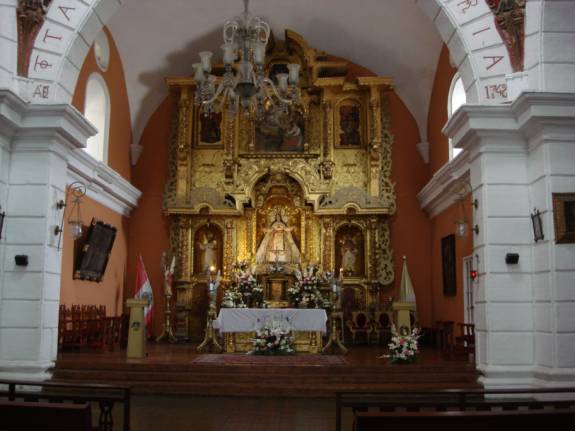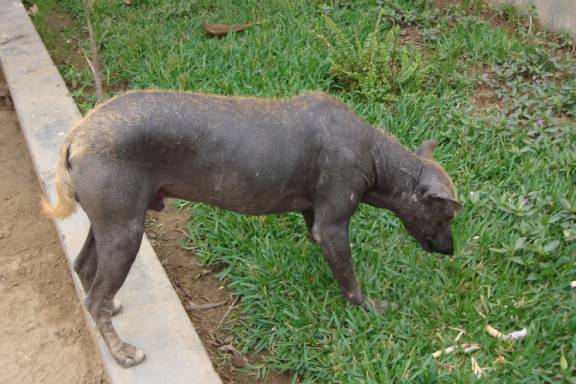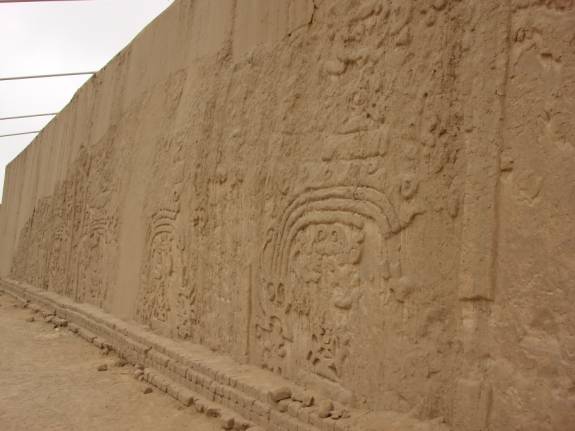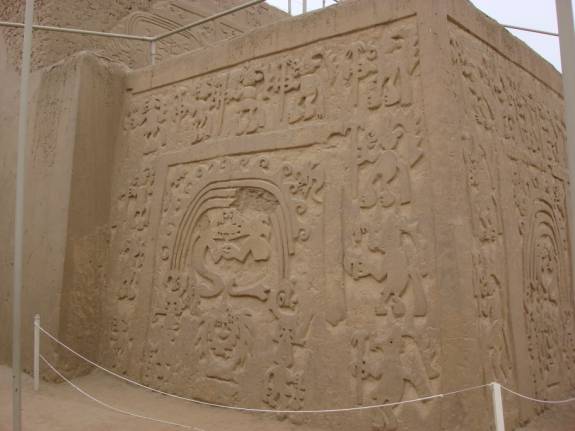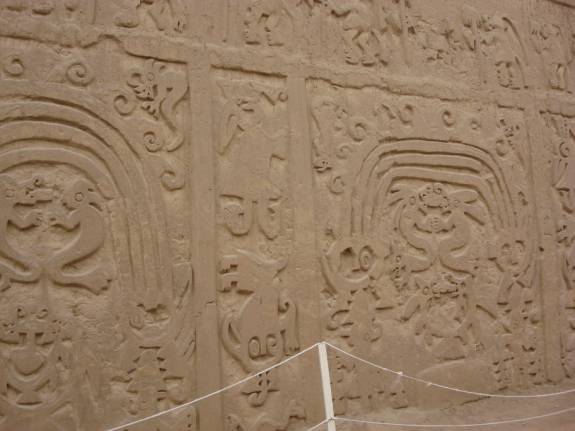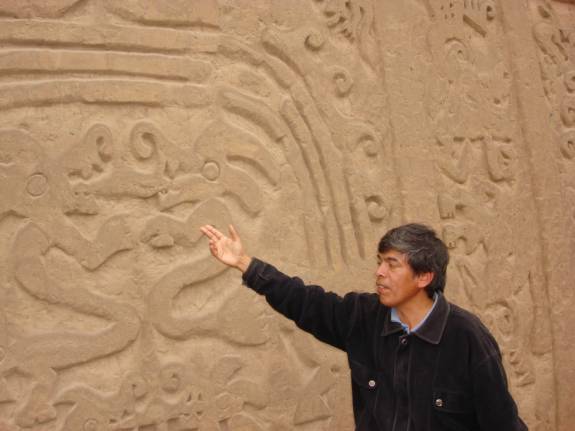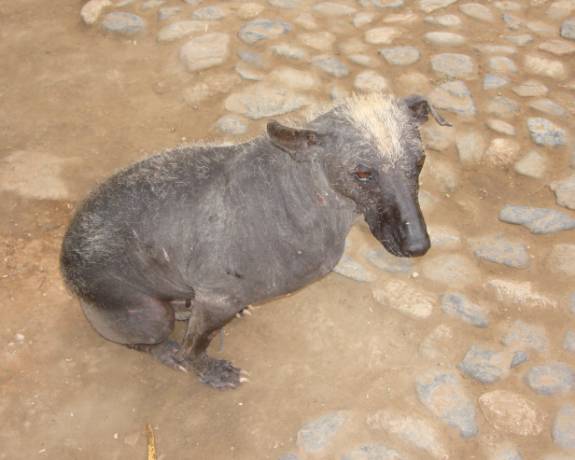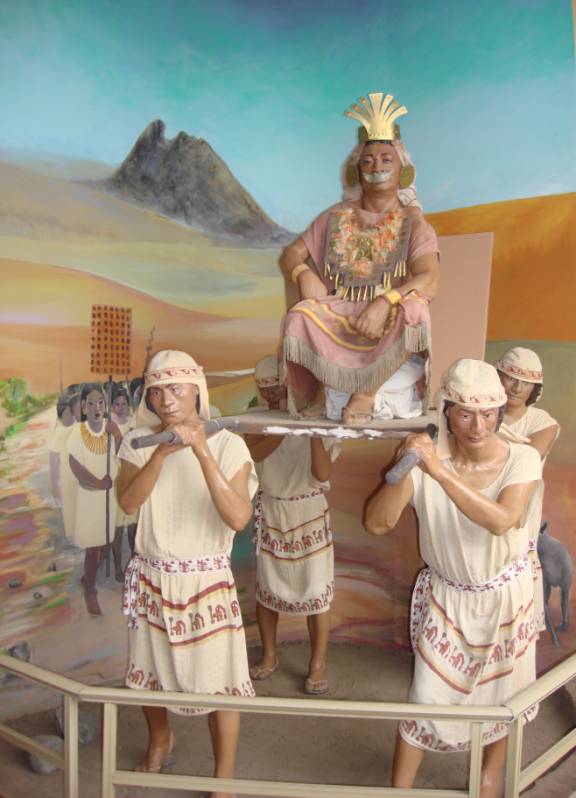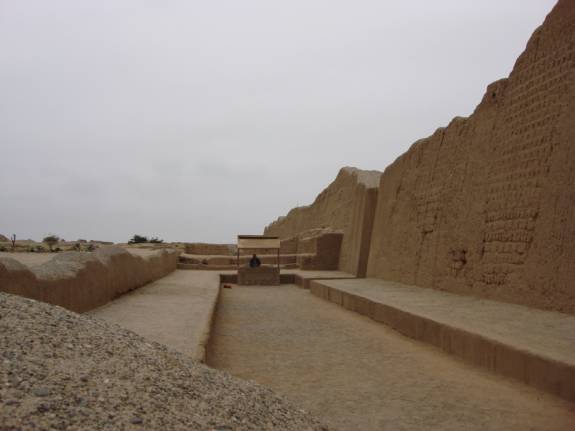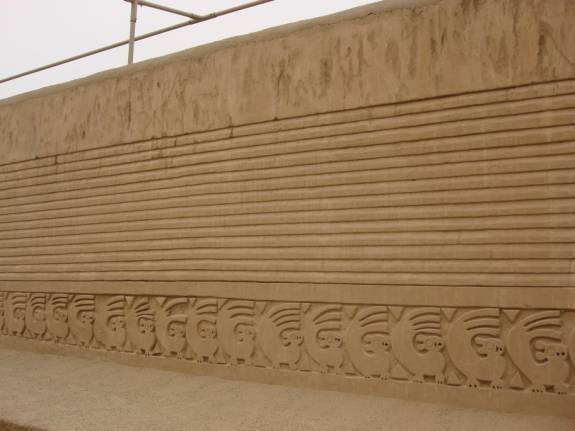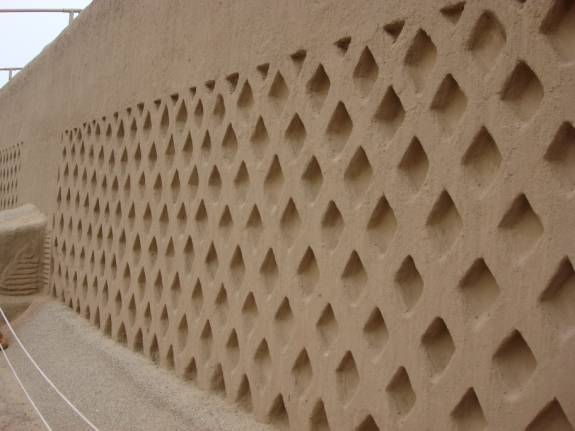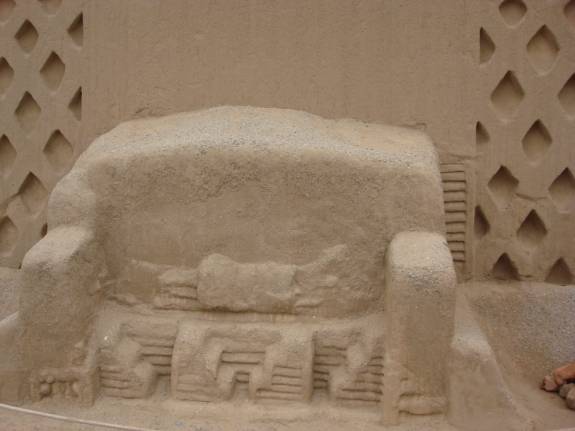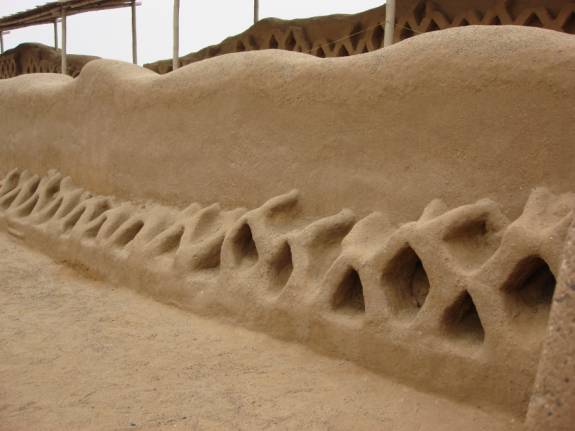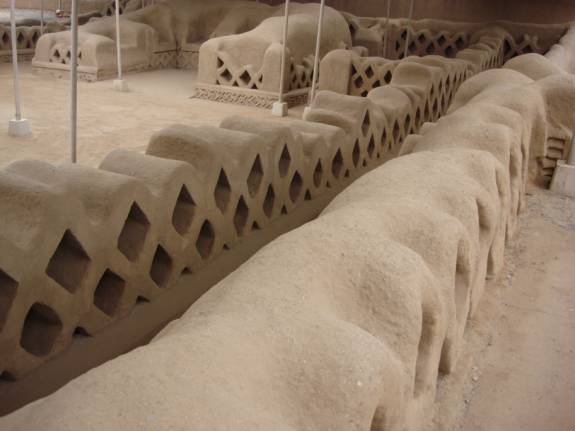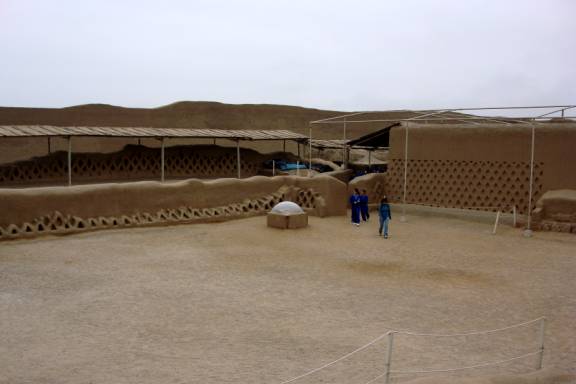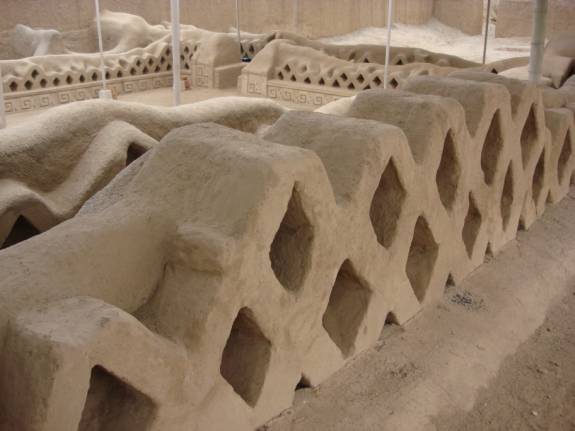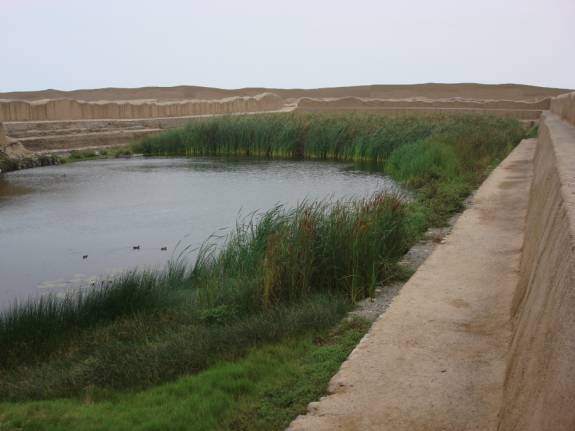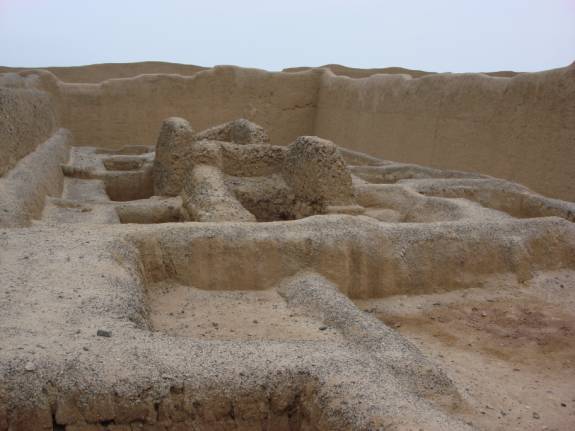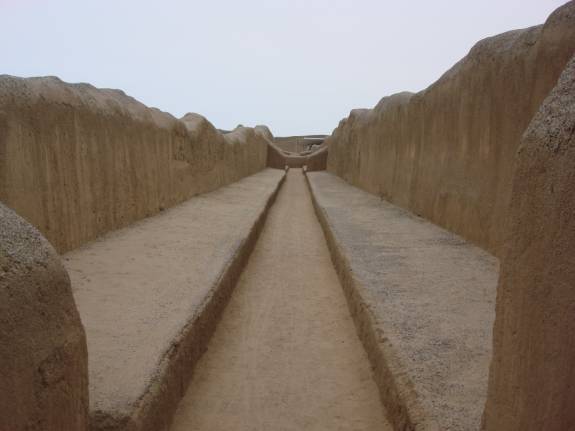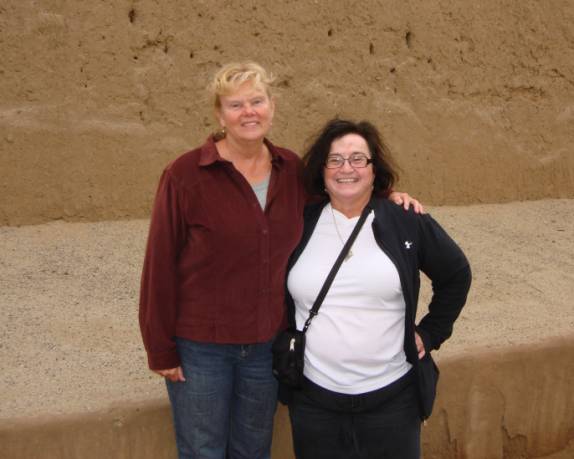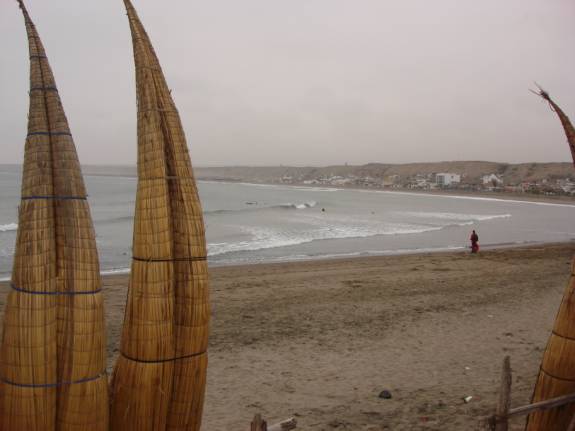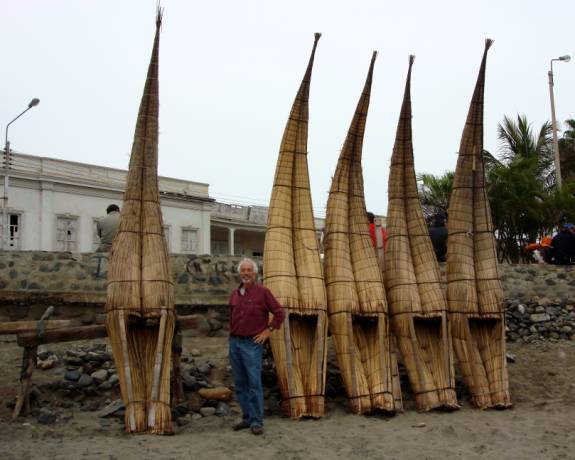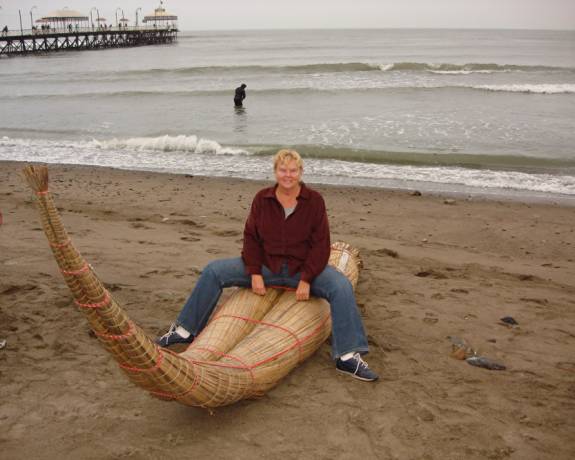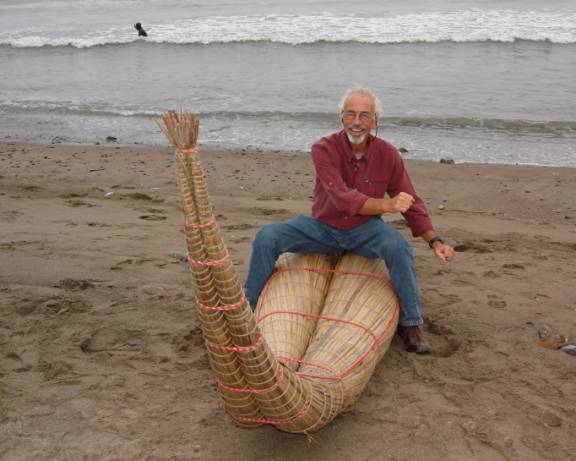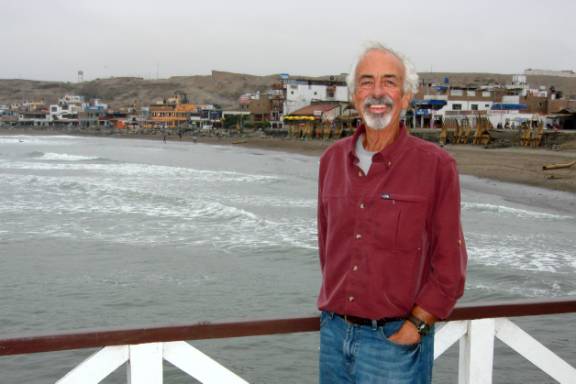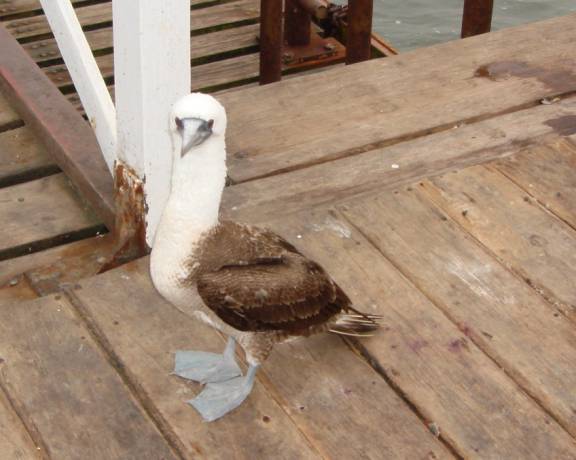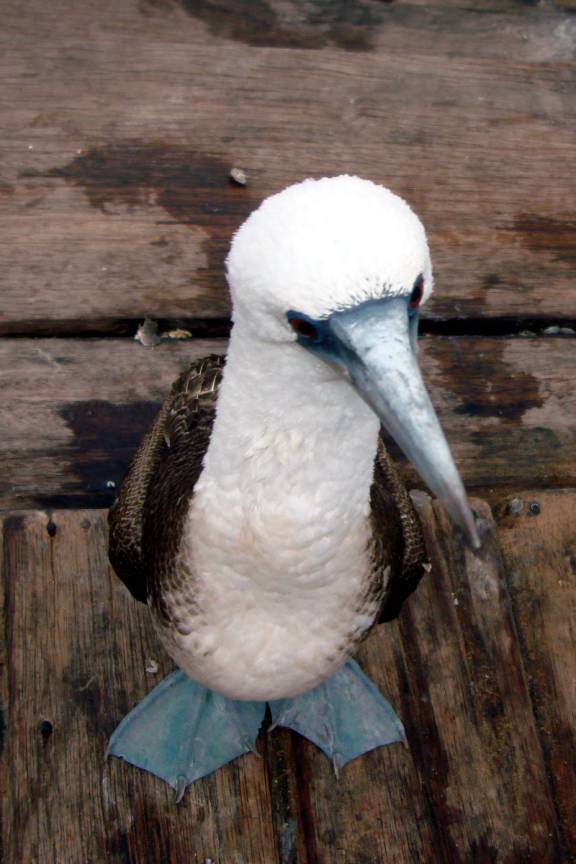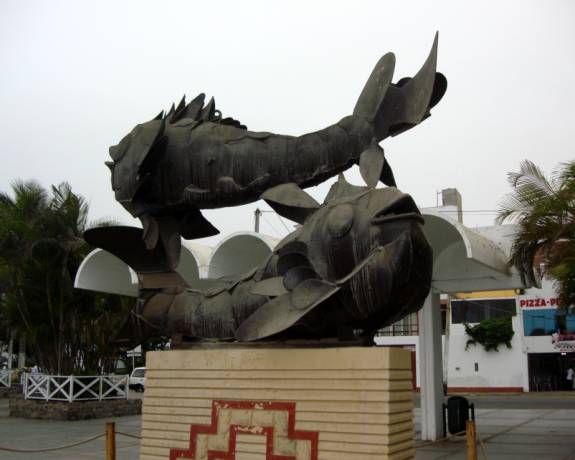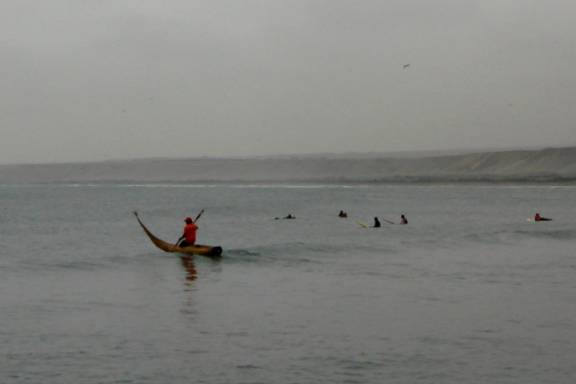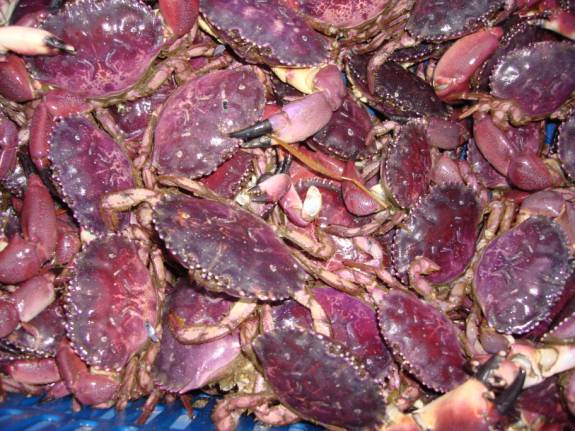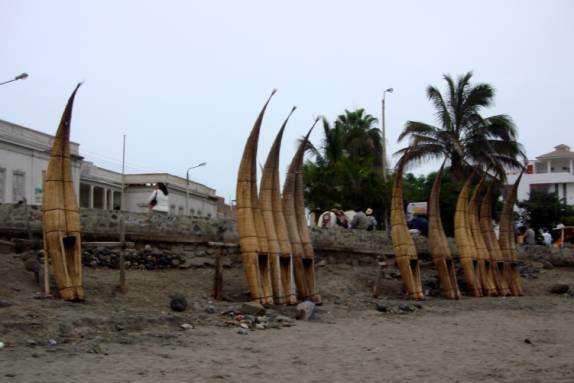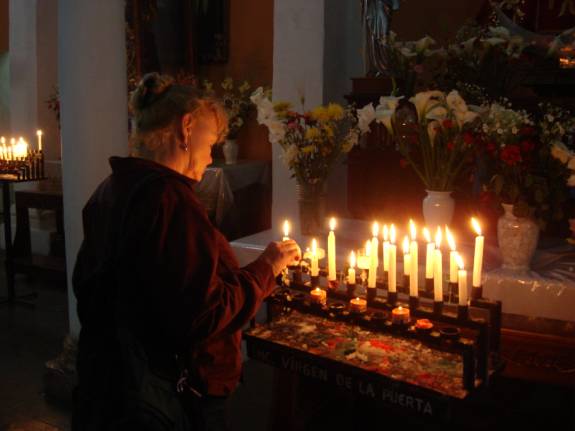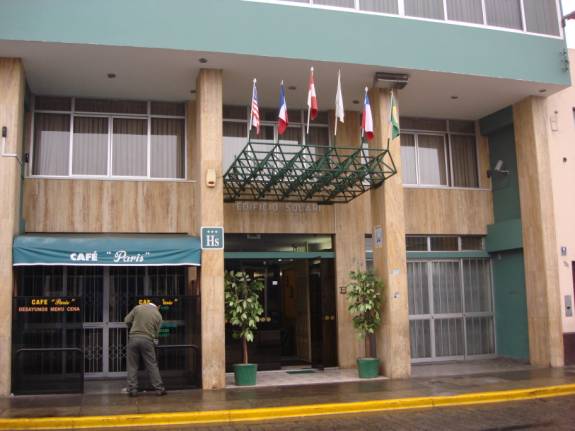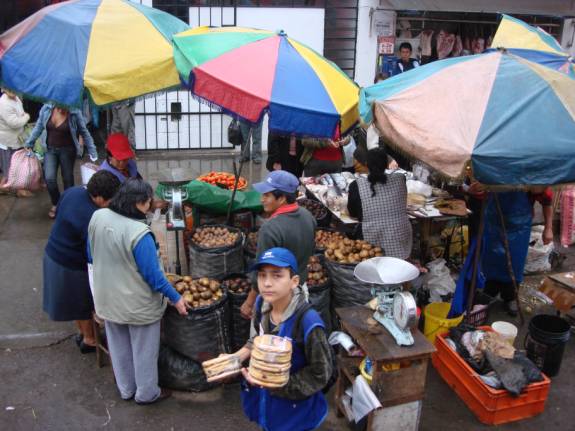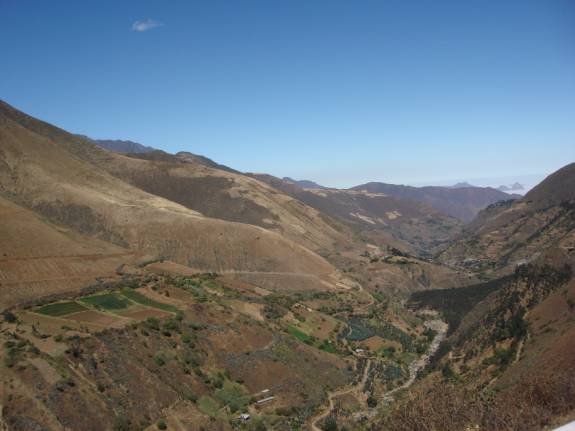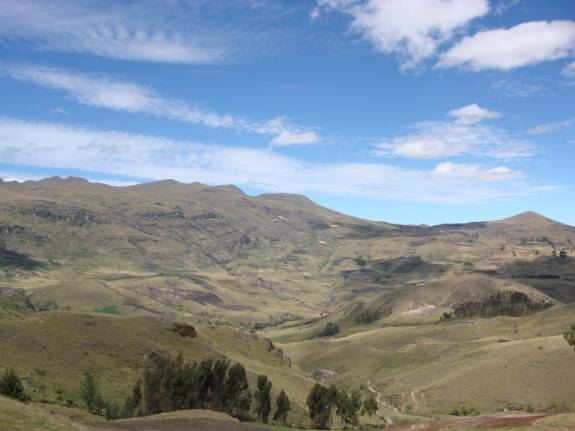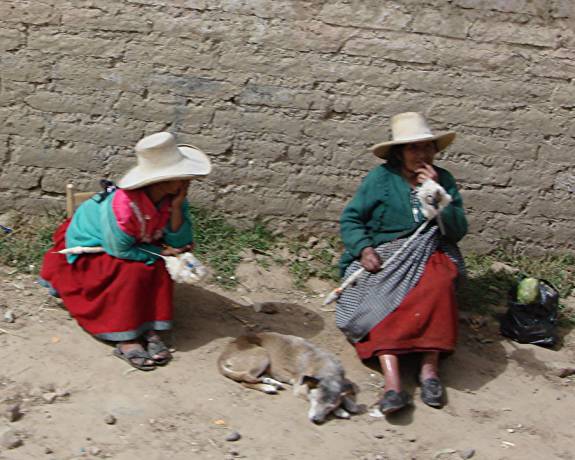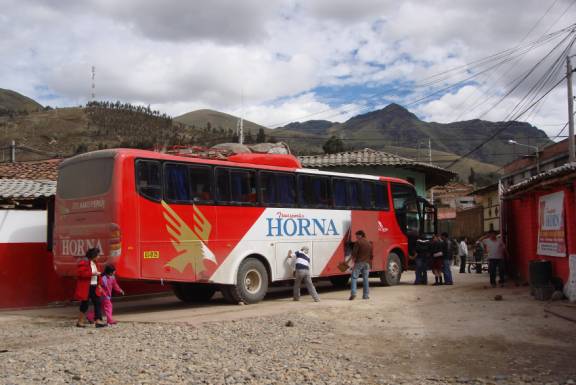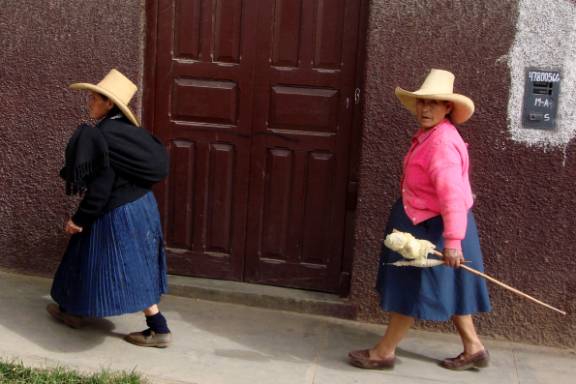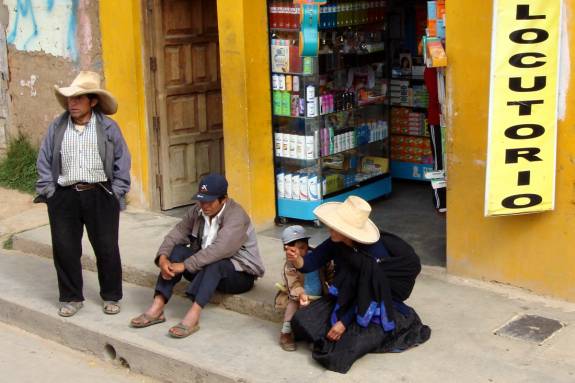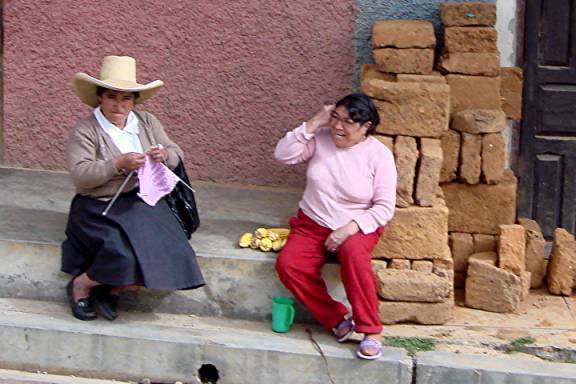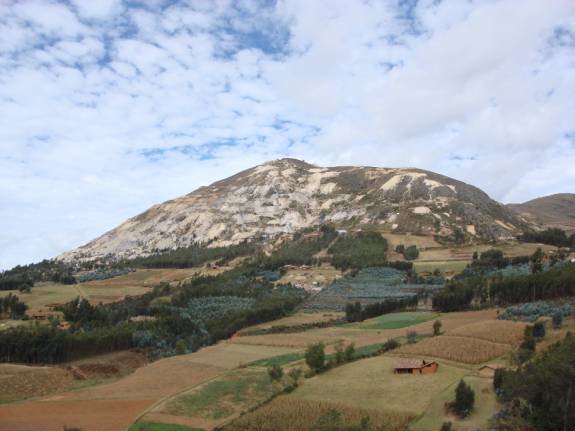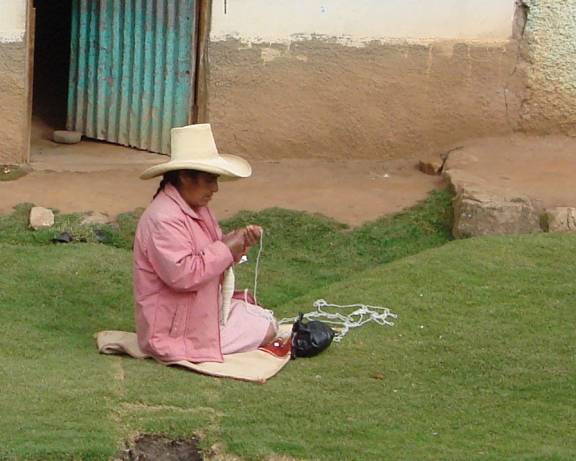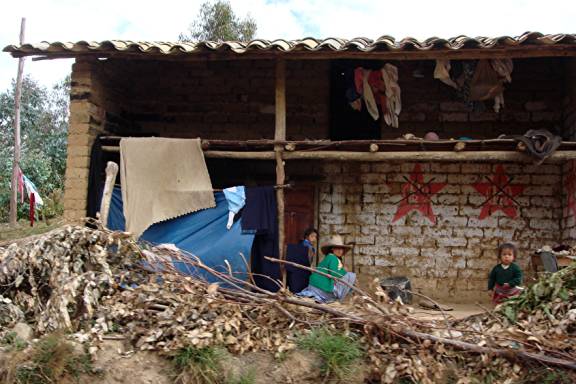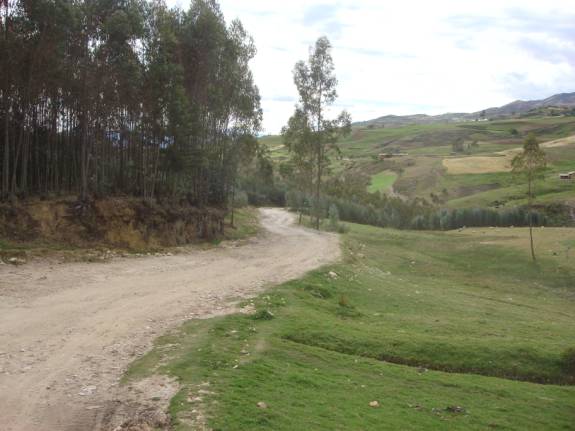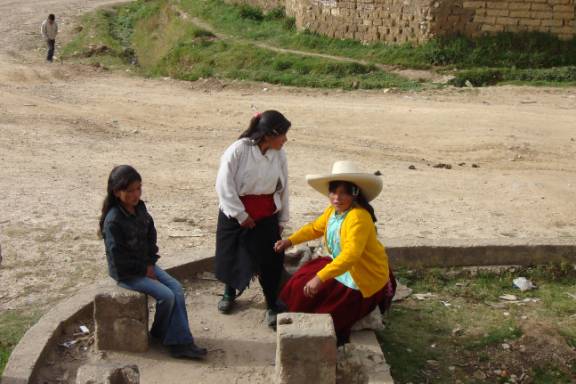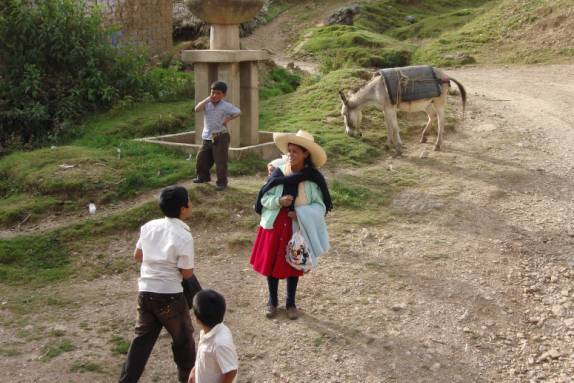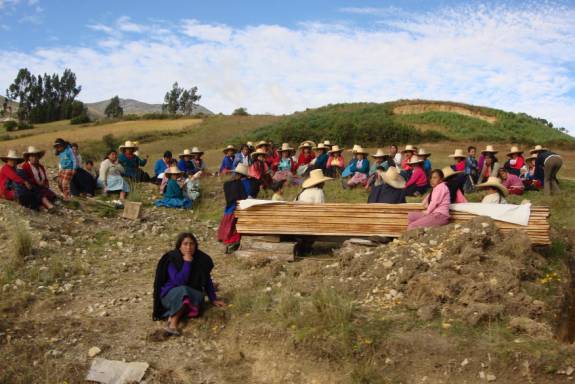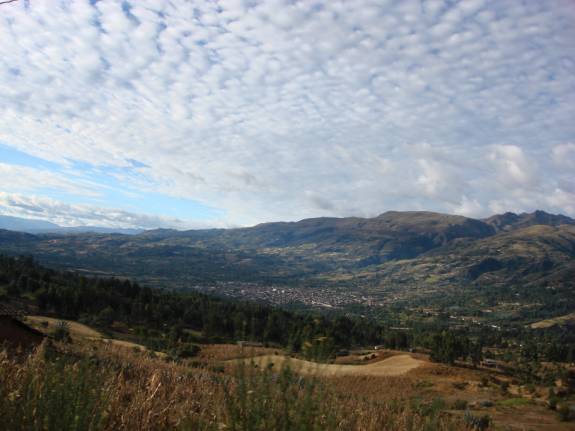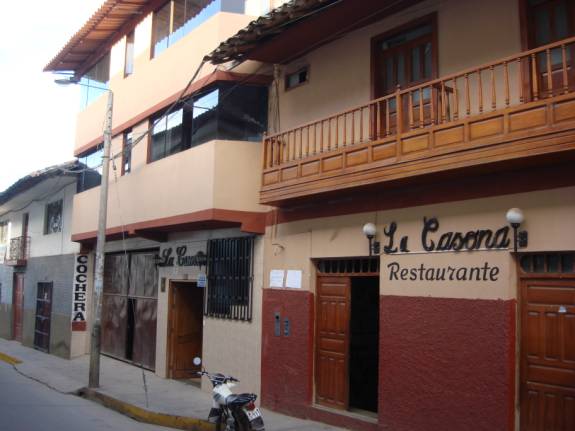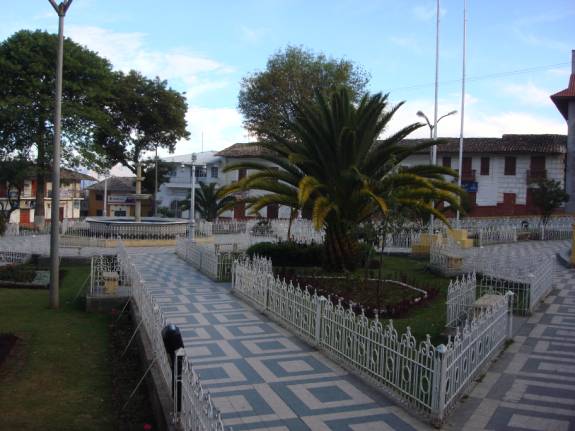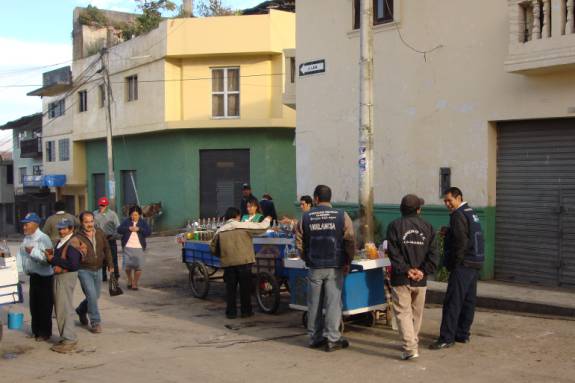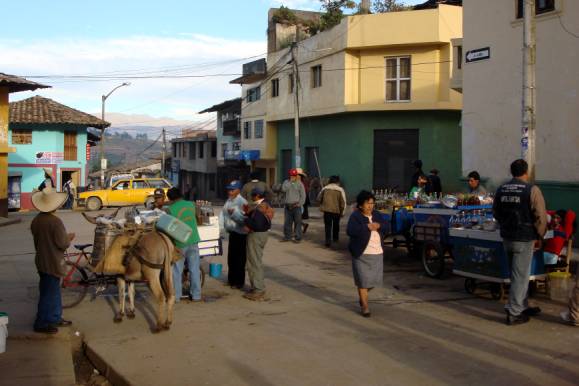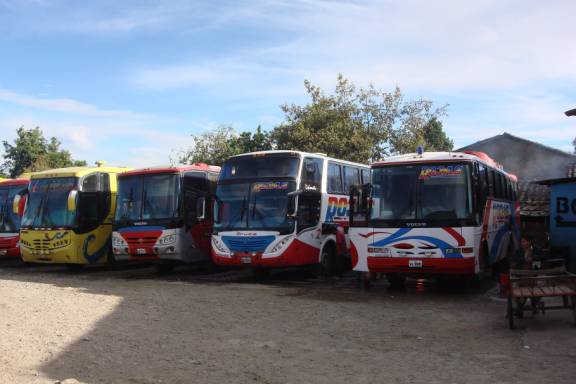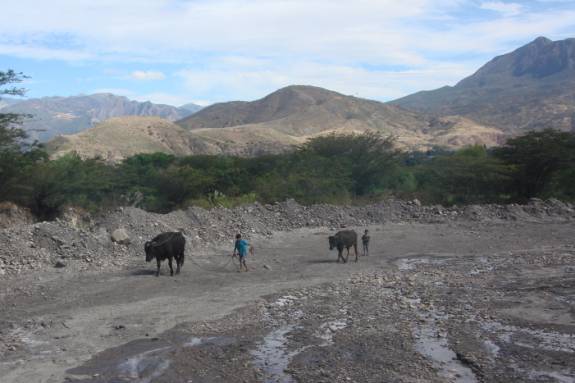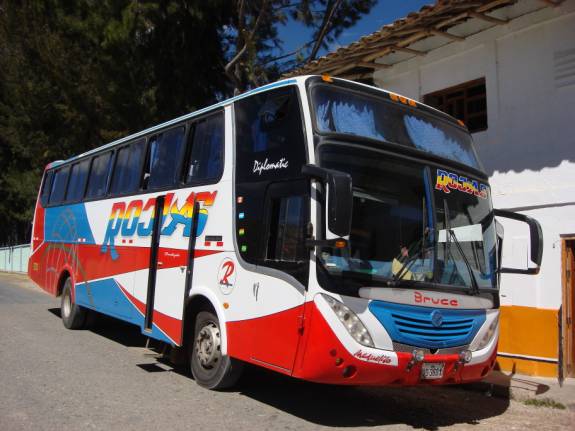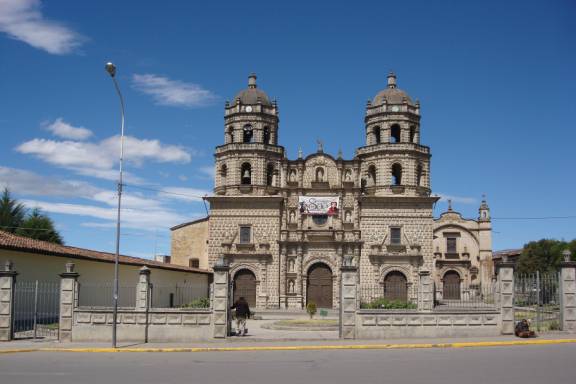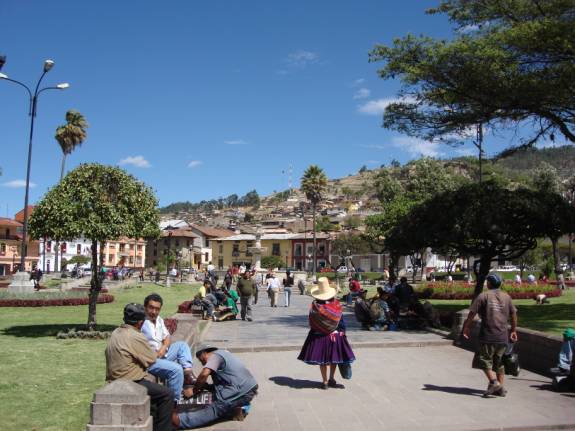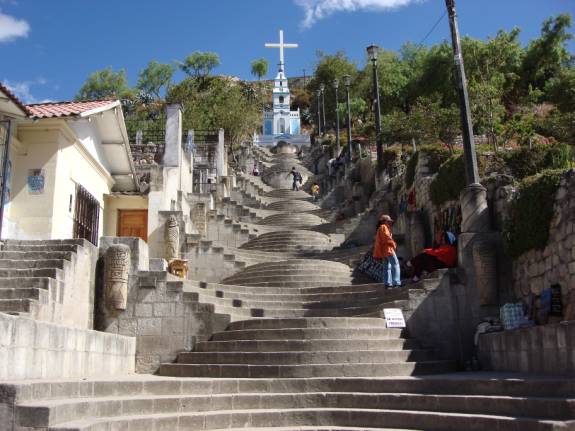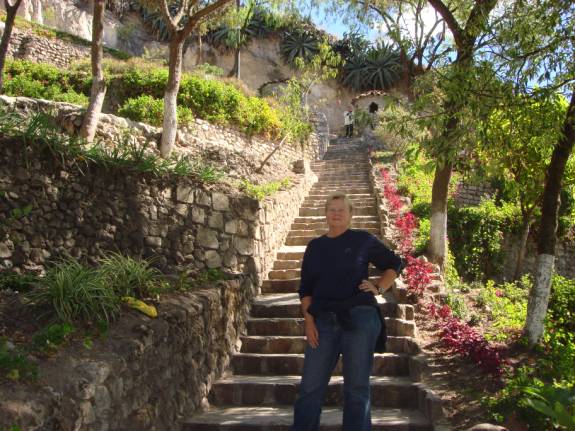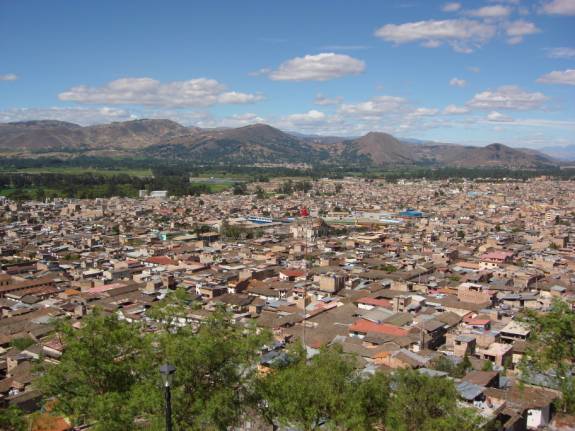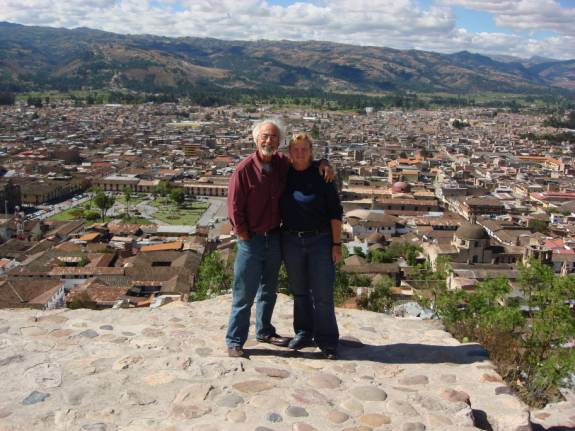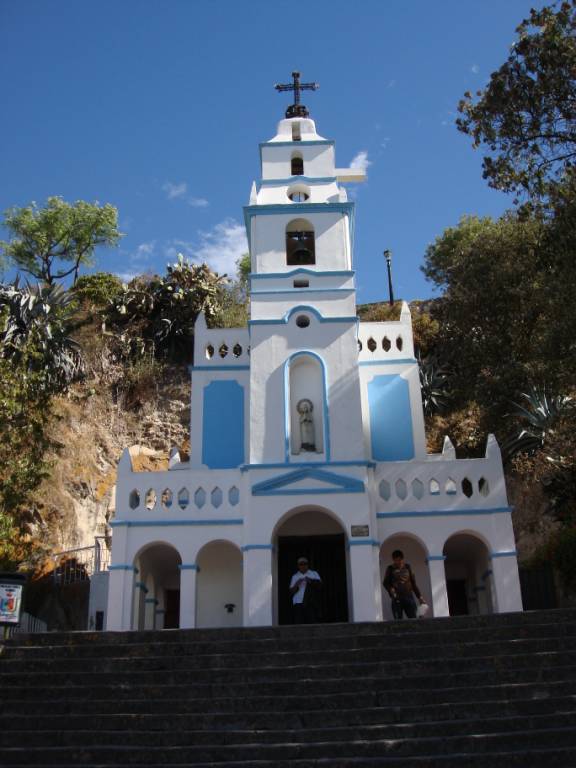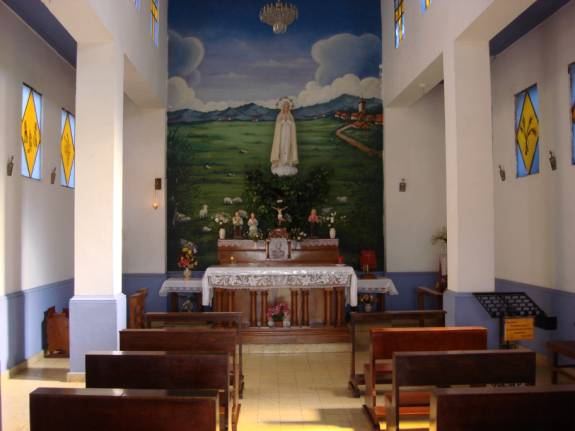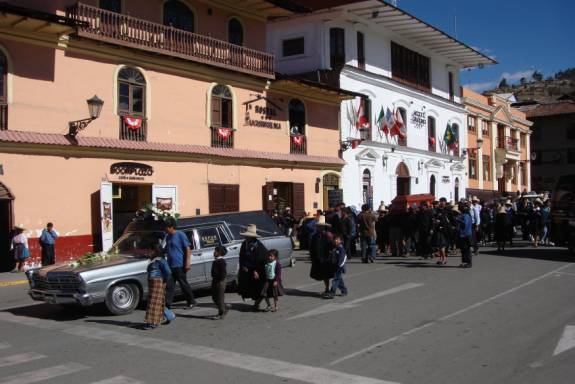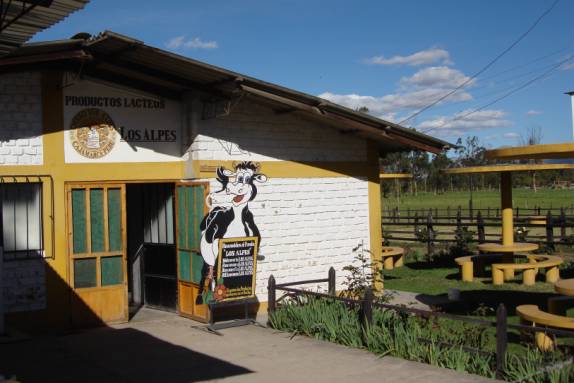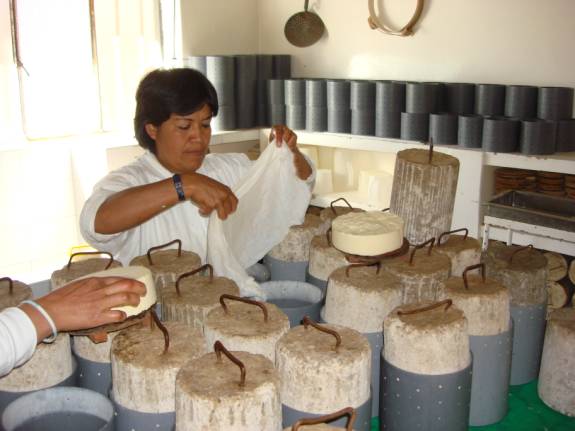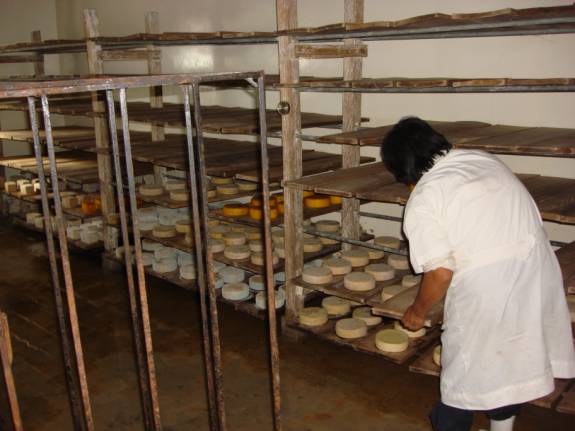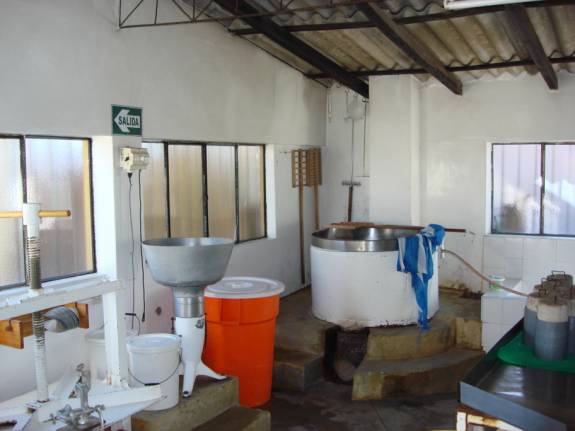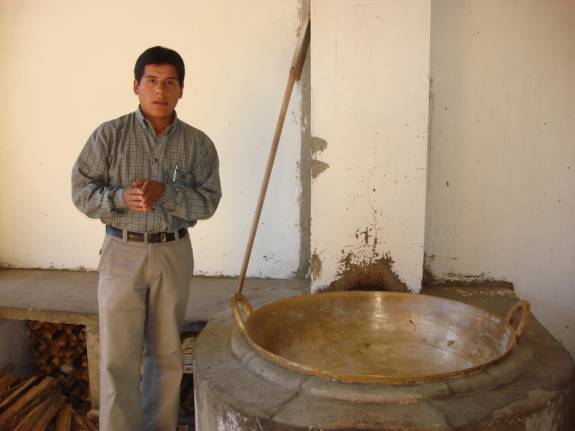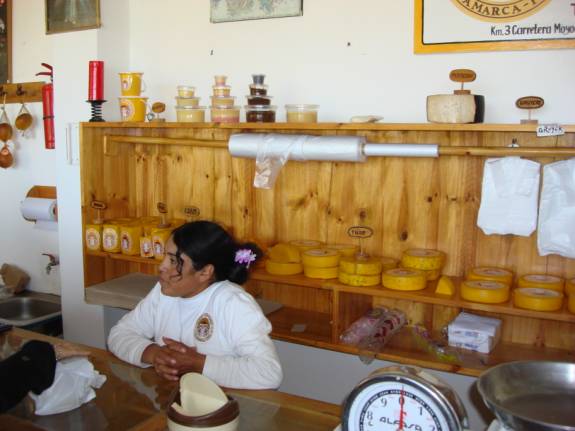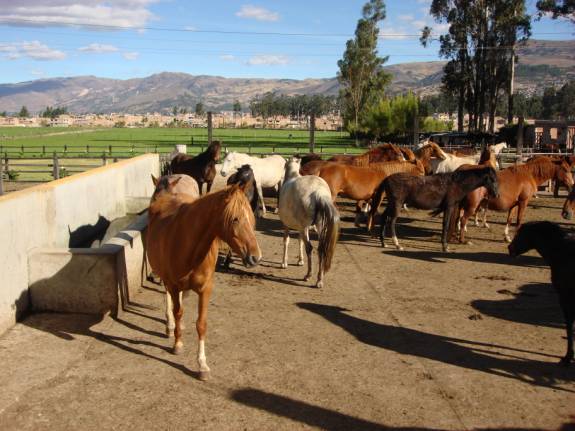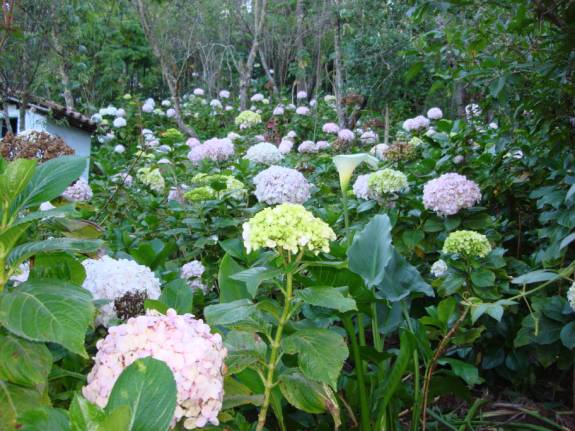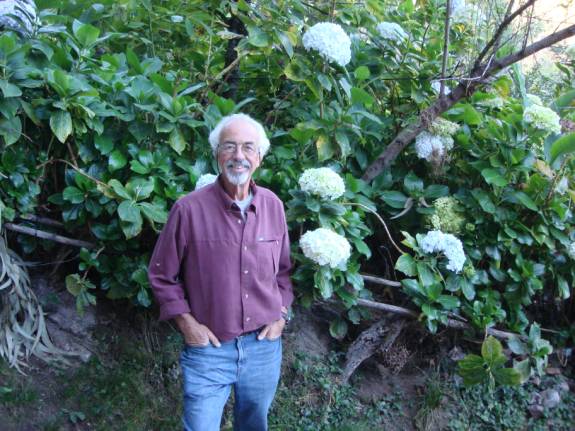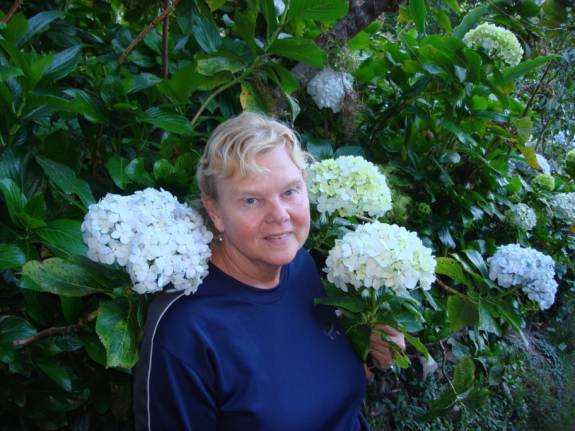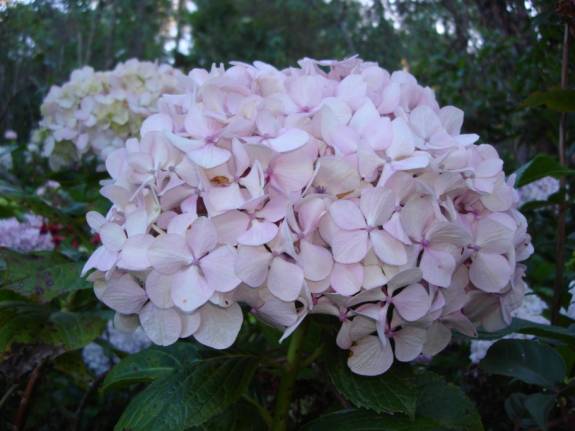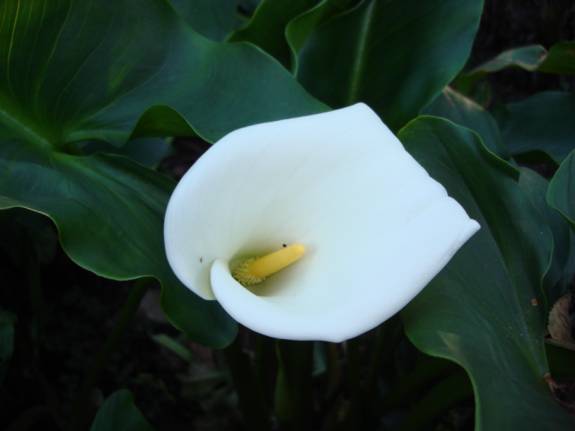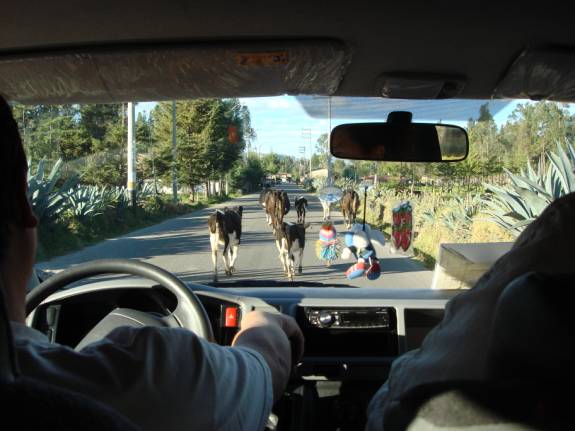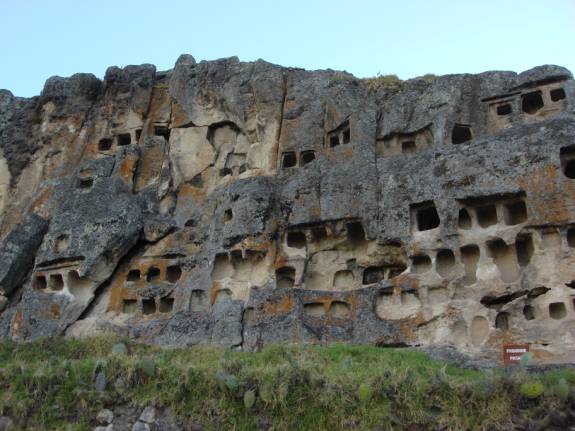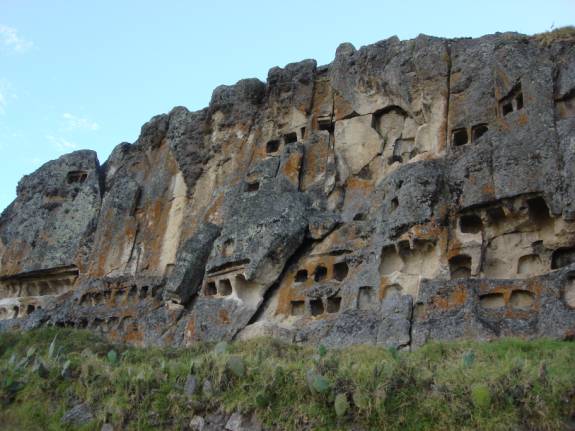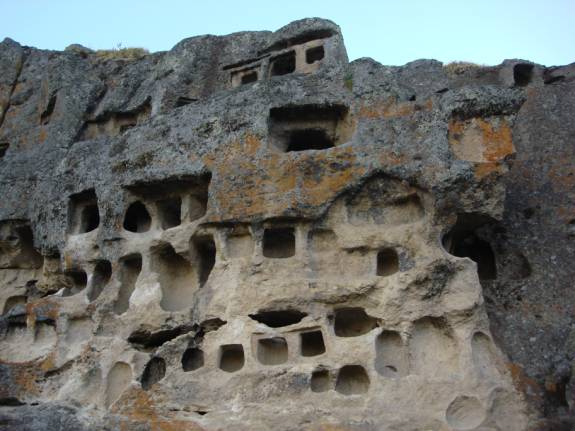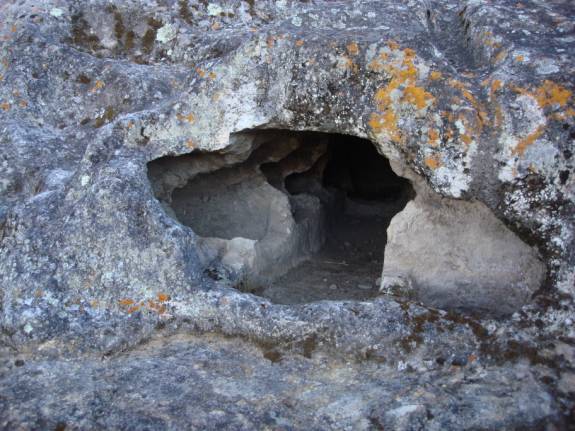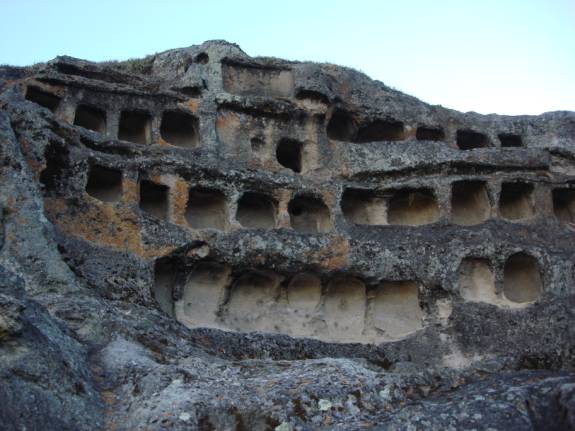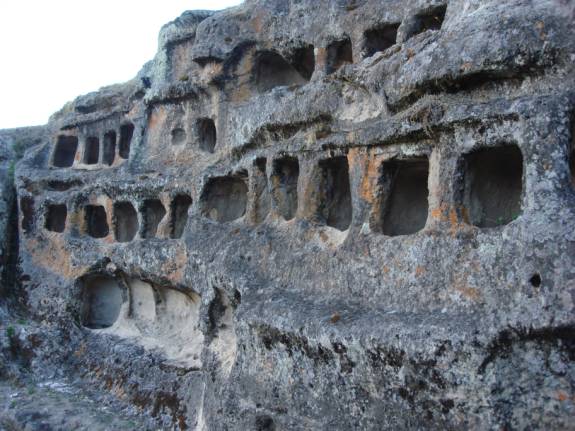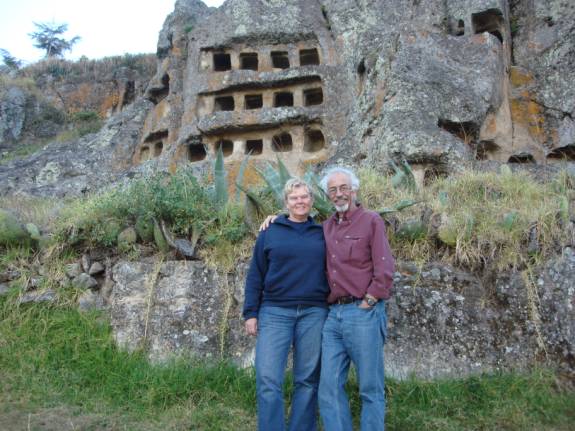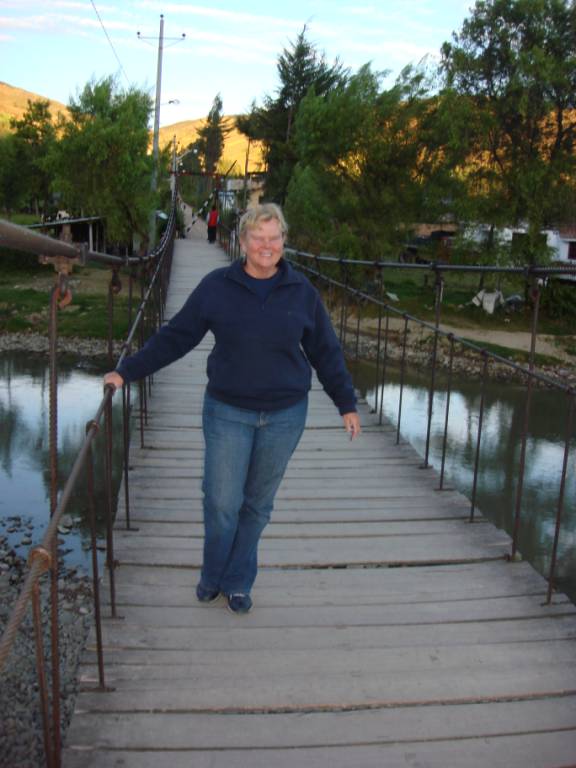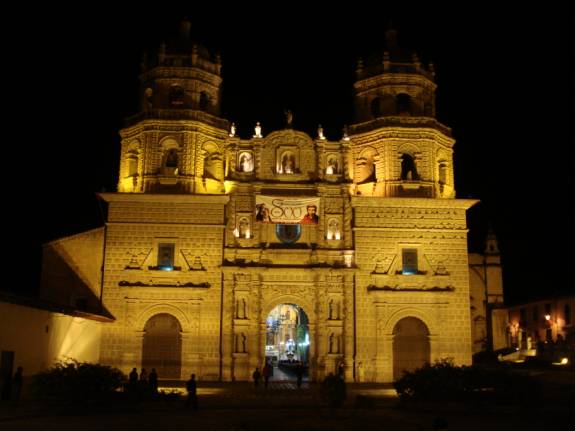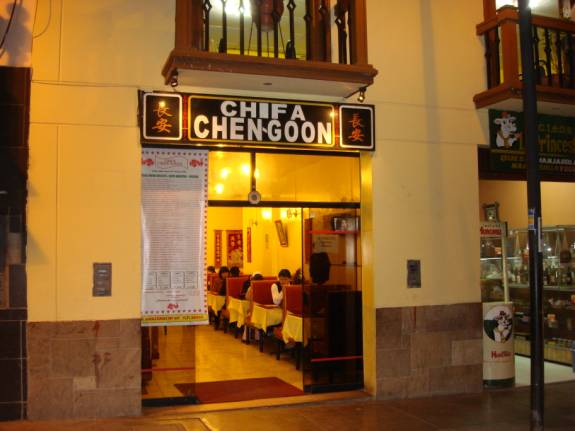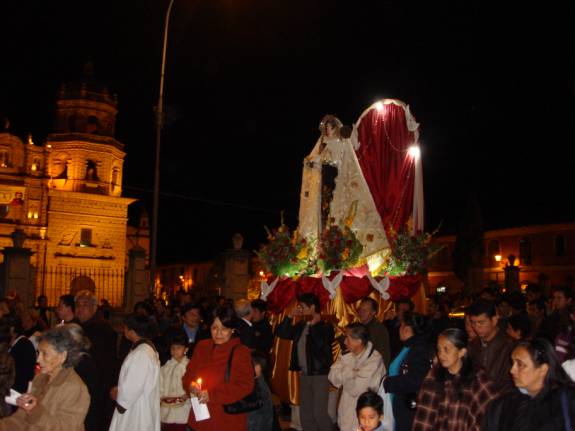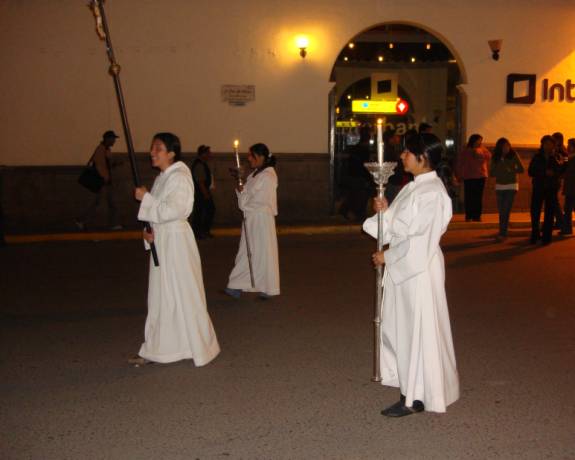|
|
|
|
Site Index:
|
UPDATE#22
07/14 thru 07/16
Howdy
Everybody, The adventures
of 2006, 2007, 2008, and 2009 through 07/13/09 have been published on the
website. We continue with the
latest edition and the third in our series of Peru and Ecuador adventures. UPDATE
2009 #22 07/14/09 thru 07/16/09 At last update,
we were in Trujillo, Peru on the northern coast area. 07/14/09
TUESDAY TRUJILLO, PERU
Judy and I have been enjoying our time in Trujillo.
At most instances, the best opportunities to visit the cathedrals are in
the mornings. Such was today at the
main Cathedral in Trujillo.
Our plan to travel tomorrow necessitated that we go to the office of
Transportes Horna on Avenida Sur, 1368, to obtain advance bus
reservations and tickets. We were
able to get seats #15 and #16 on the 9am departure.
Again this afternoon, we went to the Moche Tours office for our second
day of excursions. The destination was the famous site known as Chan Chan.
After paying our site admission, we were greeted by this Peruvian
Hairless Dog. They are very famous
in this country and are highly sought as special pets.
The local people claim that these dogs have an unusually high body
temperature. It is quite amazing
how hot they feel. We were told
that people with joint and arthritis problems often find extra comfort from
sleeping next to their natural warmth. They
sure look strange at first.
The extensive adobe city of Chan Chan was built by the Chimu culture from
around 850AD and continued until
its conquest by the Inca Empire in 1470. The reign of the Chimu Empire succeeded
the Mochica Culture around beginning of this time period.
Chan Chan was the imperial capital of the Chimu Empire.
Estimates indicate that
around 30,000 to 50,000 people lived in the vast city of Chan Chan.
Many of the walls are
decorated with elaborately carved friezes that represent shellfish, stylized
waves, marine birds, animals, and fish.
Our guide, Juan, gave some educational explanations of the walls
significance.
Some studies have checked the
internal and external temperature of these Peruvian Hairless dogs and have found
them to be exactly the same as other breeds. The study concluded that the
absence of hair leads to an immediate and direct emanation of heat thereby
differing from their hairier counterparts where the body heat is dissipated
through their furry coats by natural ventilation.
I certainly don’t claim to know the science of it all, however, they
sure felt hot to me.
As was common at most sights of royalty, the main compounds at Chan Chan
were reserved for nobility, and the general populace was summarily forbidden to
enter within the walls. Although we
did not see them all, we were told that there were 11 citadels built by the
Chimu kings.
Controlling as much as 2/3rds of the agricultural lands along the coast
of South America, the overall Chimu Empire controlled approximately 620 miles of
the north Pacific coastal area.
In the museum, life-sized dioramas portray the historical concepts.
The adobe walls reached as high as 33 feet.
The city of Chan Chan
covered 7.7 square miles with its focus on a 2.3 square mile core of large
enclosures containing the palaces of each succeeding Chimu king. Each King would construct his own palace, which would later
become his burial grounds and chamber.
Carved into the adobe, the friezes represent local animals, sea life,
geometric shapes, and other designs.
The Tschudi Palace probably housed between 500 and 1,000 noble people. Its
courtyard is one of the best places to observe Chimu friezes. The palace’s
sanctuary is very interesting with its walls exhibiting a sort of fishnet
design.
Erosion has reduced many of the walls to a fraction of their original
height.
Some of the walls have been restored to show their original splendor and
craftsmanship.
One of the most fascinating components of the Tschudi palace is the large
area known as the Sanctuary; notice the walls patterned like fishing nets.
Irrigation and the control of water was a very important facet of their
agricultural planning and their very life existence.
The city itself consisted of some 11 enormous walled quadrangles, called
ciudadelas (citadels), each
built with only one entrance. Inside each
ciudadela were large plazas,
residences, temples, gardens, reservoirs, various rooms, storage areas, and a
burial zone. They were accessed along very wide corridors.
While chatting with a woman in our small tour group, we learned that she
is from San Antonio and lives only a few miles from where we lived.
It certainly is a small world. Roberta
is a teacher at MacArthur Senior High School.
Our tour van continued the afternoon activities at
Huanchaco Beach. On the
coast of the Pacific Ocean, this community is renowned for its fishing fleet of
tortola reed boats.
The single occupant boats are paddled out over the surf in hopes of
gathering a good catch.
The stubby little boats have been effective fishing vessels for
centuries. Judy would not be very
successful in the water seated like this.
Straddling and paddling a reed boat like this is not appropriate either.
The correct position is to kneel atop the twin rolls of reeds or to
nestle one’s knees within the cutout opening.
You’d think I would be able to correctly demonstrate a boat type
bearing my last name.
There was a nice fishing pier for a walkout over the ocean waters.
This bird is a “Blue Footed Booby”.
They say, “The beauty of art is in the eye of the beholder”.
Maybe I have a bad eye, or…
Using the kneeling position, this “pescador”
is showing the proper technique for paddling.
A group of surfers was waiting patiently for the next big wave.
We sure didn’t see any significant waves today.
One fisherman/vendor had a real good catch of crabs in this basket.
After returning to the city of Trujillo, we lit some candles in memory of
our departed loved ones. The
smaller church was quite beautiful inside and out.
07/15/09
WEDNESDAY TRUJILLO to
CAJABAMBA, PERU
The 7am alarm signaled that it was time to get ready for breakfast at the
Hostal Solari. We also needed to walk to the center to exchange some more
cash for Peruvian Soles. Once
again, the moneychangers had a reluctance to convert US $100 bills with a serial
number beginning with CB. Apparently,
there have been some counterfeits with that series.
They would agree to change them, however, the rate would be lower.
Fortunately, we had some other bills.
At 8:30am, we hailed a taxi to take us to the bus station.
Whenever possible, I try to pay close attention to keep oriented as to
our route and direction. It
appeared that we were moving in an unusual direction but I relaxed thinking that
it was just an alternate route. I
soon questioned our driver in Spanish as to where we were going.
He told me that he was taking us to the Horna bus station as directed.
I told him that I believed that we were headed in the wrong direction and
re-confirmed the street address as Avenida Sur, 1368.
His response was that I was wrong and that the station was on ahead.
I insisted that we turn and go to the address that I had.
He checked by radio with a dispatcher and quickly turned around for the
other station. Apparently unknown
to him, there are two stations for this bus line that go to different cities.
Hoping that we wouldn’t miss our time frame, we meandered through
traffic to arrive just in time for our 9am departure.
Leaving the city of Trujillo, we passed by several street market areas.
As we climbed away from the coastal region, the rural mountain scenery
was spectacularly beautiful on this clear day.
The indigenous people of this area commonly wear large brimmed hats to
shield themselves from the harshness of the high altitude sunrays.
A “Locutorio”
is a place where people can make phone calls.
Many people don’t have their own personal phone so they come to these
places to use the telephone.
For indígena
women, it is considered improper for their hands to be idle.
Most often, you will find them knitting, spinning yarn, or otherwise
occupying “las manos”.
Extensive mining has occurred at this mountain.
Most of the roads are made of a gravely dirt.
Passengers get on and off the bus at numerous dirt crossroads as
requested. The frequently heard
callout, “Bajar”,
translates to wanting to “get down” or get off the bus here.
After an 8-1/2 hour trip, we arrived in Cajabamba.
A motoTaxi took us from the station to the Hotel La Casona.
For some reason, it was very difficult to communicate with the young girl
attendant. She told us that there
were no double or twin rooms, only singles.
I asked to see the rooms and found that they had just what we needed.
For about $10 per night, we had a very nice room with a clean,
comfortable bed and a nice, private bathroom with hot shower.
Planning to stay just one night, we purchased our onward bus tickets on
Transportes Rojas for the morning departure.
For dinner, we found a place serving very good roasted chicken. 07/16/09
THURSDAY CAJABAMBA to
CAJAMARCA, PERU
The 7am alarm had us on the streets of Cajabamba just 25 minutes later.
The hotel restaurant was still closed up tight.
Near the market, the townspeople were starting to get active and we had
some fresh squeezed orange juice and bread rolls for breakfast.
A MotoTaxi took us to the Transportes Rojas terminal at the outskirts of
town center in plenty of time for our 8:30am departure.
The information given was for a three-hour trip from Cajabamba.
It was over 4 hours by the time we arrived in Cajamarca at 12:45pm.
We located and checked in to the Hostal Plaza.
Although a bit worn, it was clean and represented a very good value for
the money. We were informed that
there would only be hot water available from 7am to 10am and again during those
same hours in the evening.
Next, we located a travel company to arrange day transportation for
sightseeing. With time to spare, we
walked around the lovely town area. The
city’s altitude is quite high at 8920 feet above sea level.
The Church of San Francisco has beautiful architectural stylings.
Most students of history recognize Cajamarca as the final stronghold of
the Inca Empire. In Quito, Atahualpa
had defeated his brother Huáscar in a bitter battle for total Inca power. With
his army of 80,000 warriors, he
stopped at Cajamarca. The Spanish Conquestador, Francisco Pizarro, and his 168
soldier contingent, met Atahualpa here after marching for weeks of marching from
Piura. Atahualpa refused the demands of the Spaniards and the
Catholics. Pizarro used this as an
excuse to declare the Inca as enemies of the Church and Spain.
Atahualpa was captured in the Battle of Cajamarca and several thousand
unarmed Inca civilians and warriors were massacred.
A steep and interesting stairway leads up to Cerro Santa
Apolonia and “La Silla
del Incas”.
With a base level of almost 9000 feet above sea level, the long climb up
the steep stairway is a bit strenuous.
From atop the hill, the view of Cajamarca and the mountains is
impressive.
Standing at “La
Silla del Incas”, we could imagine the commanding view that the last
reigning king of the Incas,
Atahualpa, experienced as he lead his people in the final days of the
empire.
Built at the side of Cerro Santa Apolonia, this
capilla (chapel) has been erected.
Back down the hill in town, the bereaved sadly carried the coffin of a
departed loved one in a funeral procession.
With our guide, Ander, a small group departed by van at 3:20pm to visit
the Los Alpes cheese factory.
Developed by a Swiss man, the
fabrica makes a variety of cheeses in the old fashioned way.
For the making of Queso Fresca, the curd is re-wrapped frequently in
cheesecloth and weighted by concrete cylinders to extract the moisture.
In an aging room, various types of cheeses ripen and mellow to achieve
their full flavor.
The facilities may seem basic, however, they produce a very high quality
range of products.
With a comprehensive knowledge base, combined with excellent English
skills, Ander described the workings of this wood-fired cooking kettle.
In the copper tub, milk products are cooked in a precise manner to yield
a creamy spread called, “Manjar”.
A small “tienda”, or little shop, sold an array of their products to
visitors.
Wonderful “Caballos
de Paso” (a breed of Peruvian horses) are kept at the farm/ranch complex.
Our next place of interest was a horticultural center featuring many
hundreds, perhaps thousands, of hydrangeas.
To many people, they are simply called Snowball flowers.
Seen frequently throughout Central and South America, the Calla Lily is
one of the most beautiful of floral varieties.
During the next segment of our van excursion, we shared the road with a
small herd of domestic cattle.
Our final visit
for the day was the
Ventanillas de
Otzuco. "Ventanillas"
translates to “windows” or “niches”.
The interesting site is a pre-Inca cemetery that pre-dates the Cajamarca
Culture. It is believed to be
associated to the Wari Empire. Resembling
a series of windows, hundreds of galleries and niches were hollowed into the
volcanic stone. The large “windows” or “niches” are generally
rectangular or quadrangular shaped. Originally serving as honored burial tombs,
the niches probably were sealed over with gravestones covers.
Judging by fragments found nearby, the cover stones were embellished with
relief carved figures.
Historical legends purport that the Incas may have cleared out the tombs
and used them as grain storerooms or “Colcas”.
With the openings towards the predominant wind, the cave-like niches
served to cool and prolong the important grains.
Some of the niches were for important individuals.
Others were more cave-like and contained multiple tombs.
With no disrespect, this place was so much in demand that people were
“dying” to get in…
On the way back to Cajamarca, we had the opportunity to make a bouncy
walk across another “Puente
Colgante”, or hanging bridge.
By the time we returned to the Cajamarca city center at 7pm, the stately
Church of San Francisco was glowing with evening illumination.
For dinner, we chose the Chifa Chen-Goon.
Although pretty good, it was not our favorite.
A religious procession at night filled the streets with the faithful
bearing a statue of their patron saint, la Virgen de los Dolores.
It is always very interesting to experience the local people practicing
their religious beliefs with such fervor. Our
day has been wonderful and we certainly covered a lot of fascinating places. We will continue our adventures here in Cajamarca tomorrow.
For tonight, we would rest well at the Hostal Plaza. CONTINUING
UPDATES ARE IN PROGRESS… WATCH FOR THEM, COMING SOON… POST SCRIPT:
We sincerely hope that you will review the previous years of compilations
to give context to the current editions. Please
let us know if you have any special suggestions and thoughts.
REMEMBER: The website
is now fully active and you can visit it at any time.
You can also review any of the previous logs from the years 2006, 2007,
or 2008 and learn more about the crew and their many adventures.
Enjoy. ATTENTION:
SPECIAL NOTE:
You may contact us via email anytime. Thanks
for allowing us to share our life and adventures with you. Lotsa
Luv, Fred
Reed and Judy Law AMARSE MT40 "AMARSE"
is pronounced "AM-ARE-SAY".
Our website is: www.amarse.net .
|
|
Fred H. Reed |
www.amarse.net © 2006 2007 2008 2009 2010 2011 |

